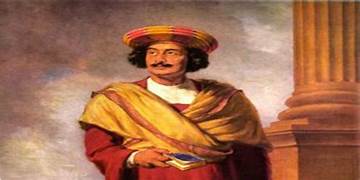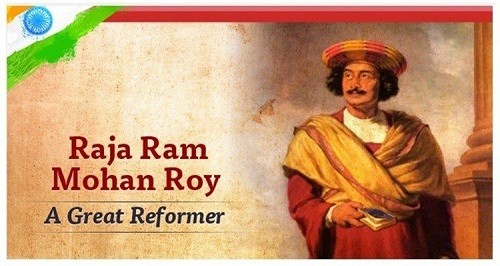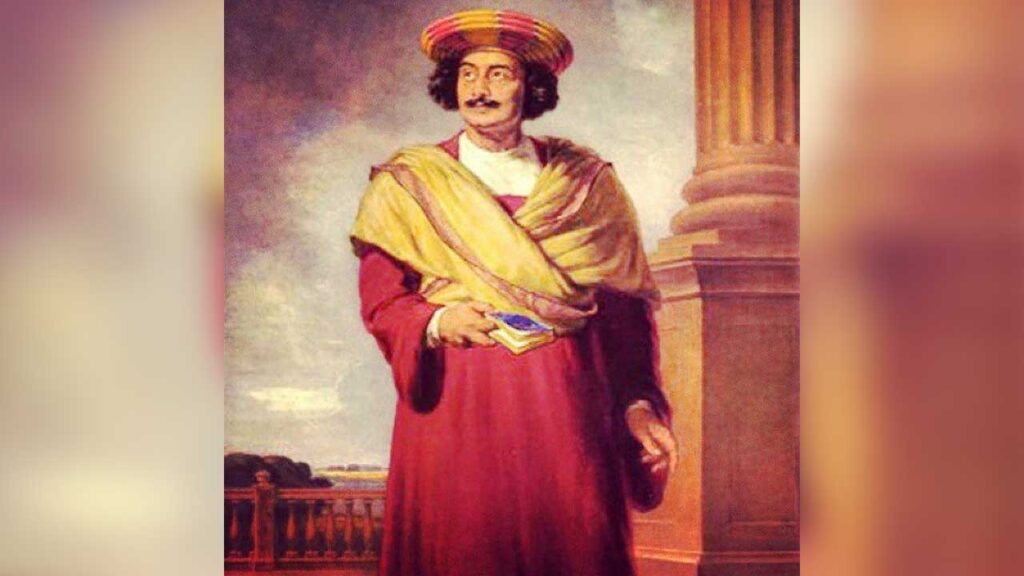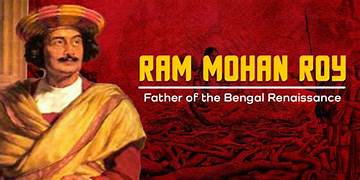
Raja Ram Mohan Roy: The Father of Indian Renaissance, Raja Ram Mohan Roy, Raja Ram Mohan Roy History
Table of Contents
ToggleRaja Ram Mohan Roy: The Father of Indian Renaissance
Table of Contents
Early Life and Education
Born on May 22, 1772, in Radhanagar, Bengal, Roy’s intellectual curiosity was evident from a young age. Ram Mohan Roy’s upbringing was marked by diverse influences, with his father, Ramkanta, a Vaishnavite, and his mother, Tarini Devi, from a Shaivite family. He was exposed to various religious texts, including the Vedas, Upanishads, Quran, and Bible, which shaped his worldview. His thirst for knowledge led him to study Persian, Arabic, Sanskrit, and English.
A Pioneer of Social and Religious Reform
Raja Ram Mohan Roy, a towering figure in India’s history, is often hailed as the “Father of Indian Renaissance.” His relentless pursuit of social and religious reforms ignited a spark that led to a profound transformation of Indian society in the 19th century.

Social and Religious Reformer
Roy’s primary goal was to eradicate social evils prevalent in Indian society. He vehemently opposed the practice of Sati (widow immolation), child marriage, and caste discrimination. His efforts culminated in the abolition of Sati in 1829, a significant victory for social justice.
Roy’s religious beliefs were rooted in monotheism and rationalism. He founded the Brahmo Samaj, a socio-religious reform movement that emphasized the unity of God and the importance of ethical living. The Brahmo Samaj advocated for a rational interpretation of religious texts and rejected blind faith and superstitions.
Educational Reformer
Recognizing the importance of education, Roy established the Hindu College in Calcutta in 1817. This institution aimed to provide modern education to Indian youth, challenging the traditional Gurukul system. He also advocated for the use of English as a medium of instruction, which would facilitate the dissemination of Western knowledge and ideas.
Political Activist
Roy was not only a social and religious reformer but also a political activist. He engaged in correspondence with British officials, highlighting the injustices of colonial rule and advocating for Indian representation in the government. His writings and speeches inspired a sense of nationalism among Indians.

Legacy
Raja Ram Mohan Roy’s legacy continues to inspire generations. His relentless pursuit of social justice, religious tolerance, and educational reform laid the foundation for modern India. He is remembered as a visionary who challenged the status quo and advocated for a progressive and enlightened society.
Raja Ram Mohan Roy Works
Raja Ram Mohan Roy, a prominent figure in the Indian Renaissance, was a prolific writer and social reformer. His works spanned various genres, including religious texts, social commentaries, and educational materials. Here are some of his notable works:
Literary Works:
- Tuhfat-ul-Muwahhidin (1804): This Persian treatise on monotheism aimed to promote the concept of one God among Muslims.
- Vedanta Gantha (1815): A Bengali translation of the Vedantic texts, which aimed to introduce the core principles of Hinduism to a wider audience.
- Translations of Upanishads (1816-1819): Roy translated several Upanishads into English, including the Kenopanishads, Ishopanishad, Kathopanishad, and Mundaka Upanishad. These translations helped to introduce Indian philosophy to the Western world.
- A Conference between the Advocate for, and an Opponent of Practice of Burning Widows Alive (1818): This Bengali and English pamphlet presented a debate on the practice of Sati, arguing against it and advocating for its abolition
- A Defence of Hindu Theism (1820): This work defended the monotheistic principles of Hinduism against polytheistic interpretations.
- The Precepts of Jesus- The Guide to Peace and Happiness (1820): This work presented a comparative study of Hinduism and Christianity, highlighting their shared ethical principles.
- Bengali Grammar (1826): This grammar book aimed to standardize the Bengali language and promote its use in education.
- The Universal Religion (1829): This work advocated for a universal religion based on the principles of monotheism and ethical living.
- History of Indian Philosophy (1829): This work presented a comprehensive overview of Indian philosophical thought, from ancient times to the present.
- Gaudiya Vyakaran (1833): This grammar book focused on the Bengali dialect spoken in the Nadia district of Bengal.
- Social and Political Writings:
- Articles and essays on various social and political issues, including education, women’s rights, and the abolition of Sati.
- Correspondence with British officials and other reformers on issues of Indian governance and social reform.
- Educational Works:
- Establishment of the Hindu College (1817), which later became Presidency College, Calcutta.
- Foundation of the Atmiya Sabha (1815), a philosophical discussion group.
- Establishment of the Brahmo Samaj (1828), a socio-religious reform movement.
- These are just a few examples of Raja Ram Mohan Roy’s extensive literary and intellectual output. His works continue to be studied and appreciated for their contribution to the Indian Renaissance and their lasting impact on Indian society.
Raja Ram Mohan Roy was a trailblazer in Indian history, earning the title “Father of Indian Renaissance” for his groundbreaking contributions to social reform, education, and politics. Born in Radhanagar, Bengal Presidency, his influential work spanned multiple fields, transforming the fabric of Indian society.
Social Reforms
Roy championed key social causes, including:
- Abolition of Sati: He fought tirelessly against this practice, where widows were burned alive on their husbands’ pyres.
- End to Child Marriage: Roy advocated for raising the marriage age to protect young girls from early marriage.
- Polygamy and Dowry System: He criticized these practices, promoting a more equitable society.

Educational Contributions
Roy believed education was pivotal for social change. He:
- Founded the Anglo-Hindu School in 1822 and the Vedanta College in 1826, emphasizing a blend of Western and Indian learning.
- Supported Western Education: Roy advocated for its induction into Indian education.
Legacy
Raja Ram Mohan Roy’s impact on Indian history is profound. He:
- Established Brahmo Sabha in 1828, precursor to the Brahmo Samaj, promoting monotheistic ideals and social reform.
- Influenced Indian Politics: Roy’s work paved the way for future reformers and independence activists.
His remarkable journey came to an end on September 27, 1833, when he passed away in Bristol, England, but his legacy continues to inspire generations.
Thank you for taking the time to read. We appreciate your interest in Raja Ram Mohan Roy.
I hope you’d liked the article , if you then please do like share and comment.
For more articles like this you can visit http://Stationvidya.com
You can also check this https://stationvidya.com/freedom-fighter-bhagat-singh/
Leave a Reply